Elasticity of Demand
1/21
There's no tags or description
Looks like no tags are added yet.
Name | Mastery | Learn | Test | Matching | Spaced |
|---|
No study sessions yet.
22 Terms
Elastic Demand
exists when a small increase in a good’s price causes a major decrease on the quantity demanded. (%^QD>%^P)
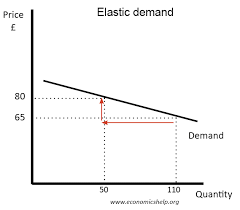
Inelastic Demand
Exists when a change in a good’s price cause little impact on the quantity demanded. (%^Qd<%^P)
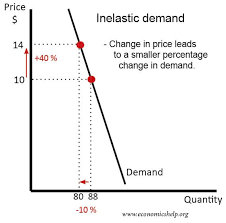
Special Case: Perfectly Elastic Demand
Price is fixed hortizontally and consumers are all willing to buy it at that one price.
Standard/indetitical product is sold by competitors.

Special Case: Perfectly Inelastic Demand
when a change in price has no impact on the quantity demanded. Usually things needed for survivial (medicine).
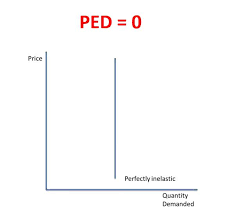
Factors that Affect Elasticity of Demand
Avalability of Substitutes:
- more substitues → elastic demand (more changes). An increase in price results in a huge change in Qd.
- less substutues → ineslatic demand (less options) An increase in price results in little change in Qd.Nature of the product (Importance of the product and its use)
→ not important → elastic (Qd decrease a lot)
→ highly important → inelastic (Qd changes a little)
3. Percentage of one’s income:
→ Large percentage of one’s income (Elastic)
→ Small percenatge of one’s income (inelastic)
4. Time period since the change:
→ lots of time since change → elastic
more time to find substitutes & alternatives
→ recent price change → inelastic
Calculations for Elasticity of Demand

Elasticty Demand Answer Analysis
Elastic Demand: if elasticity of demand is >1 (1.3)
Inelastic Demand: if elasticity of demand is <1 (0.1)
Perfectly Inelastic: if elasticity of demand =0
Perfectly elastic: if elasticity of demand = ∞
Unit elastic: if = 1
Inelastic Supply
Supply is inelastic when it’s difficult or slow for producers to change how much they supply, even if prices change. (If supply changes a little (or barely at all) when the price changes → it’s inelastic.)
Example 1: A farmer growing wheat cannot instantly increase supply when prices rise, because crops take months to grow.
➜ So, wheat supply is inelastic in the short term.
Elastic Supply
Supply is elastic when producers can easily increase production if the price goes up. (If supply changes a lot when the price changes → it’s elastic.)
Example 1: A toy manufacturer can quickly produce more toys if the price of toys increases. They just need to run their machines longer or hire a few extra workers.
➜ So, toy supply is elastic because it can change easily with price.
Factors Affecting Elasticity of Supply
Time
→ long term: more elastic supply
→ short term: inelastic supply
→ no time: elastic of supply is 0Avalability of Resources
→ lots: elastic
→ scare: inelasticEase of storage:
→ lots of storage: elastic
→ less shortage - inelastic supplyPrice/Cost Factors:
→ lower input expenses - more elastic supply (you can supply more when cost of production is low)
→ higher input expenses - inelastic supply
Calculation fo Elasticity of Supply
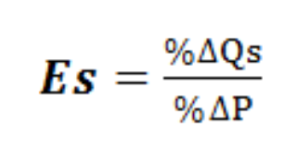
Cross Price Elasticity
The relationship between changes in the price of one good and the demand for another related good.
Substitutes have a positive direct relationship
Complements have a negative inverse relationship.
If independent the two goods are indepdent
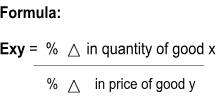
Complementary Goods
Negative inverse relationship:
As the price of one good goes down, the Quantity of the other good increases.
Substitute Goods
Positive Direct Relationship:
As the price of one good goes down, the quantity demanded for the other good decreases.
Indepdentdent goods
(Chips & labubus, nothing related). indepdent, no relationships
Income Elasticity of Demand
The relationship between a change in consumer incomea and the change in demand for different types of good.
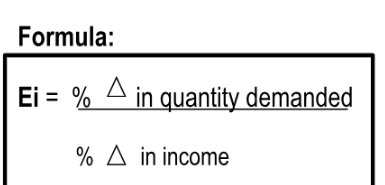
Normal good (EID)
Normal goods: When income increases, demand for these goods also increases.
Necessities: Demand is inelastic (less than 1) and less sensitive to income changes. Examples include salt or milk.
Luxuries: Demand is elastic (greater than 1) and highly sensitive to income changes. Examples include vacations or luxury cars.
Normal goods have a direct positive relationship.
Inferior Goods (EID)
Inferior goods: When income increases, demand for these goods decreases. Consumers switch to more expensive alternatives as their income rises. Examples include instant noodles or public transport.
Inferior Goods have inverse negative relationship.
Elasticity of Deamnd & Revenue Connections
Elastic Goods:
Revenue increases when price is down, revenue decreases when price is up.
Inelastic Goods: Revenue increases when price is up, revenue decreases when price is down.
Misconception 1. Consumer’s always pay the tax
In summary, this is a misconception because, in reality, who pays the tax depends on the type of good. For example, if the demand for the item is inelastic, then consumers will pay most of the tax. However, if the demand for the item is elastic, then producers will pay most of the tax.
Misconception 2: The government only charges high taxes on products like ciagrettes and alcichil because they concerned about people’s health.
This is a misconception because the government doesn’t tax products like cigarettes and alcohol only out of concern for health. It also does so because these goods have inelastic demand, meaning people continue buying them even when prices rise — allowing the government to earn more revenue from these taxes.
Misconception 3: A war on drugs will reduce crime.
This is a misconception because the “war on drugs” doesn’t necessarily reduce crime. Since the demand for drugs is inelastic, reducing supply only raises prices, which encourages the growth of the black market and organized crime rather than eliminating it.